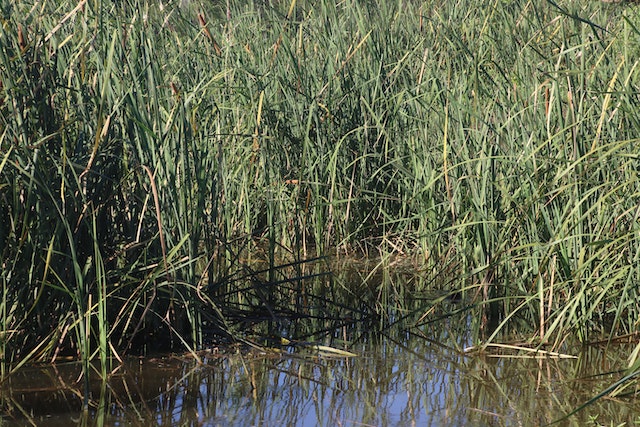
What is a marsh and a swamp? A marsh is a wetland on the edge of a lake or stream that is often flooded by water. A swamp is a wetland that has water saturated soil. The marsh is at the edge of the water, where it reaches the ground. The swamp is the next part of the land, at the point between the marsh and the dry land.
Marshes grow very close to water and they are usually flooded by it. The main vegetation in a marsh are herbaceous plants. These are plants that don’t have a woody stem, such as grasses, reeds, and sedges. They grow very quickly and they don’t last very long. Most of them are annual or biennial plants. Papyrus is one of the plants that grows in a marsh. Most trees can’t survive in a marsh because they need to be out of the water so that they can breathe. When the marsh floods, the trees will drown. The water is a mix of water and soil, reducing its oxygen content dramatically. The marsh is at the edge of a body of water and the grasses and herbaceous plants bind the soil together with their roots. They slow down the flow of the water and make a place for wildlife to live. The fish that live in the water are able to survive on low amounts of oxygen.
There are three types of marshes: tidal salt marshes, tidal freshwater marshes, and inland freshwater marshes. Salt marshes are at the edge of the sea, in areas where the land goes straight into the water, usually in an estuary. The plants that live here obviously have to be salt resistant. The marsh is affected by the tide because the land floods every time the tide comes in. Freshwater tidal marshes are slightly further inland and are close enough to the sea to be affected by the tide, but far enough away that the don’t have any salt. Inland marshes form on the edges of lakes and rivers. The Everglades in Florida is the largest freshwater marsh in the United States and it is fed by the river coming out of Lake Okeechobee. The Everglades is 20,000 km2, which means it is about the same size as Slovenia.
A swamp is an area between a marsh and the dry land. It is an area of waterlogged land. Marshes only have grasses and vegetation that can survive in low oxygen, but swamps have a lot of trees. The trees have different methods of getting above the waterline where the oxygen is. Some of them grow very quickly until they are out of the water and then slow down. Some of them have roots that float above the water. They have all evolved ways of surviving in the low oxygen environment of a swamp. Mangrove trees grow in swamps because they can survive in low-oxygen soil. Mangrove trees grow very close together and they are lifted out of the water by a tangle of roots, keeping them safe. This has multiple benefits because the tangle of roots traps sediment and nutrients, giving the mangrove trees sustenance. The roots also help to keep the coastline stable.
Just like with marshes, there are saltwater and freshwater swamps, depending on where they are. We have an image of swamps being hot and humid, but swamps can appear anywhere there is water. The soil in a swamp is saturated and there is quite often standing or slow-moving water, unlike the flowing water in a marsh. This means that there is a lot of sediment in a swamp because dead vegetation just sinks to the bottom, rather than being washed away. Swamps are very nutrient rich environments, which is why a lot of wildlife live in them.
Over half of the wetlands, swamps, and marshes in the world have been destroyed as urban areas increase. This causes a problem because marshes and swamps protect the coast from storms, waves, and storm surges, absorbing the water that could have seriously flooded the land. They also help mediate the strength of storms. They protect and stabilize the coastline, preventing the sea or rivers from eroding the land. The marshes and swamps trap minerals and nutrients that are washed towards the sea, keeping the oxygen level in the sea stable. They are enormous ecosystems that are slowly being killed off. We are far better with them than we will be without them. And this is what I learned today.
Sources
https://education.nationalgeographic.org/resource/marsh/
https://en.wikipedia.org/wiki/Marsh
https://www.quora.com/Why-can-some-trees-grow-successfully-in-a-swamp-and-others-cannot
https://education.nationalgeographic.org/resource/swamp/
